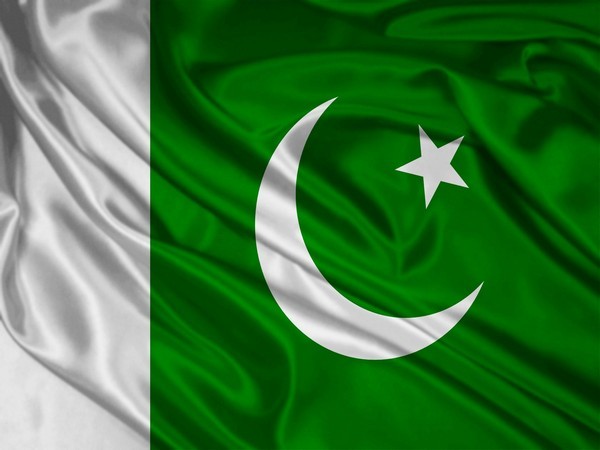Is Pakistan on the verge of an imminent collapse? Given Pakistan’s history, it is likely that this too shall pass. However, this time around the economic crisis is quite deep and could well result in a shock experience, like Sri Lanka. Even as all economic indicators show a downward spiral from which there appears to be no coming back Pakistan is hoping for a miracle. Pakistan has taken fourteen loans from the IMF thus far, but ironically none of them have ever been completed. This, therefore, raises serious questions about the capacity and capability of the Pakistani state to get out of this cul-de-sac. Unless China or Saudi Arabia are ready to bail out Pakistan, it is possible that Islamabad may be staring in the face of a disaster like never before. The Pakistani rupee has plummeted to PKR 250 against a dollar, and the currency had to forego 12 per cent of its value, the government has raised the price of petrol and diesel by Pak Rs 35 per litre. This marks the beginning of the worst economic crisis since the formation of Pakistan in 1947. It is looking at a 28 per cent inflation rate!
On 24 January 2023, PM Shehbaz Sharif indicated that the ruling PDM alliance was ready to sacrifice its “political career for the sake of the country” and accept the International Monetary Fund’s (IMF) “stringent” conditions to revive the loan programme. IMF officials have held their latest negotiations via video link with Pakistan, and reports indicate that they have not shown any willingness to relax the conditions and will not release the next tranche unless the Pakistan government keeps its promises. IMF conditions include elimination of electricity subsidies, aligning gas tariffs to international prices, implementing a market-determined exchange rate, and lifting restrictions on the opening of letters of credit. Pakistan’s desperation is such that they may well accept these conditions. If this happens, it will immediately receive US$ 1.2 billion from the IMF, with possible additional funding from Saudi Arabia, UAE, China, and other institutional lenders.
The challenge for Pakistan is that it has an embarrassing history of not fulfilling IMF conditions. Pakistan’s immediate economic struggles have persisted for over three years now, with the suspension of IMF’s bailout package in 2020, losses from floods in June 2022, and political mismanagement leading to an economic crisis in 2022. In addition to past mismanagement, the current crisis was exacerbated by the Shehbaz Sharif government’s indecision in twice postponing the decision to return to the IMF. According to the State Bank of Pakistan (SBP), as on 8 April 2022 Pakistan had US$ 10.9 billion in foreign exchange reserves.
However, between April-August 2022, these reserves decreased by 29 per cent, to US$ 7.8 billion. Finance Minister Ishaq Dar wasted crucial time believing that Pakistan would receive ‘unconditional’ loans from Saudi Arabia, China, and the UAE. However, this expectation has been belied. Faced with one economic blunder after another, Finance Minister Ishaq Dar claimed in a widely circulated clip, that Pakistan is the only country founded in the name of Islam and “Allah is responsible for its development and prosperity”. Only the devil can mislead people to this extent! As one writer aptly states: “Must we remind the Islamic Republic – “Do not blame me, but blame yourself” according to Surah 14 Ibrahim, Ayat 22.” (Asian Lite, 30 January 2023) Pakistan’s other all-weather friends are also reluctant to bail it out. Despite promises, a US$ 13 billion loan from Saudi Arabia and China is yet to materialize. Even if this does come through, it will only add to Pakistan’s US$ 130 billion debt, in a nation with a US$ 376 billion economy in 2022. Many analysts are warning that Pakistan could potentially go ‘bankrupt’ in the next few months. Importers are unable to clear containers due to a shortage of dollars, while shipping companies are threatening to suspend Pakistan’s operations over the country’s failure to make timely payments. This will negatively impact both imports and exports. The SBP today has less than US$ 4 billion in Forex reserves, barely enough for three weeks of imports, while the estimated needs to clear the containers and pending requests to open more letters of credits, is close to US$2 billion.
The incumbent government has also stopped over US$ 2 billion in payments of dividends, which will impact investment prospects in the future. Just how precarious the situation is can be gauged from the fact that businesses face the risk of closure, leading to a breakdown of supply chains, as domestically manufactured goods rely on imported raw materials. Pakistan’s textile industry is quickly losing credibility and market share in the international market. Hospitals are also running short of medicines and food scarcity is pushing people to give up on life. Sixty lakh people are struggling to find a single morsel of bread. 9.4 million acres of crop land are devastated due to floods, affecting Sindh and Balochistan the most. Videos of people standing in queues all day long and getting handful of wheat to feed their families have flooded the internet.
Pakistan was born in 1947 at the whims of Muslim elites and officers. It was supposed to become the pure land of peace and progress. After more than six decades of Army’s rule, however, the citizen of Pakistan has not seen a single day leading a life of dignity. The nation has jumped from one aid package to another, with the Army has garnered majority of the resources for itself, while leaving the people to fend for themselves. Pakistan suffers the ignominy of being a rogue state, but there is little the people of Pakistan can do as corruption has taken over the State and the Army has masterfully replaced colonial rule. Rulers change every now and then, shifting blame to their predecessors. Thus, the vicious cycle of people’s woes continues and today threatens the very existence of Pakistan.
Source: https://www.efsas.org/
Source: https://epaper.dawn.com/
Source: https://www.adb.org/news/
Source: https://economictimes.
geo-politik.eu

